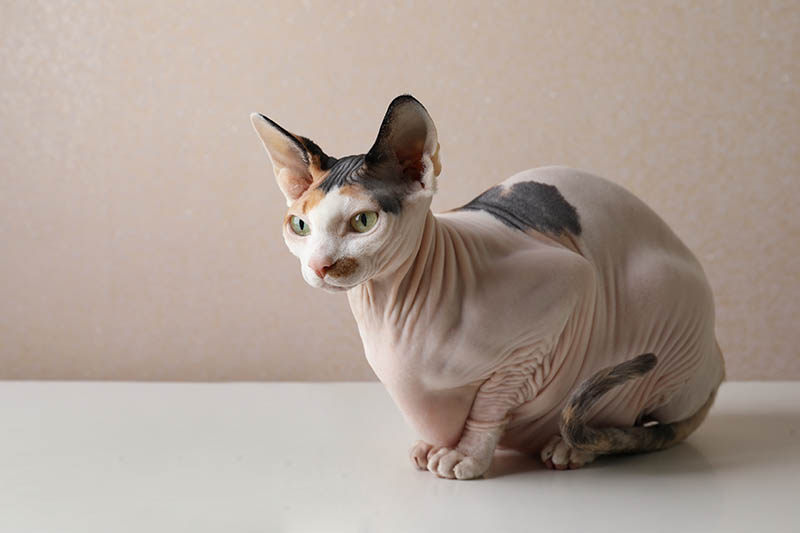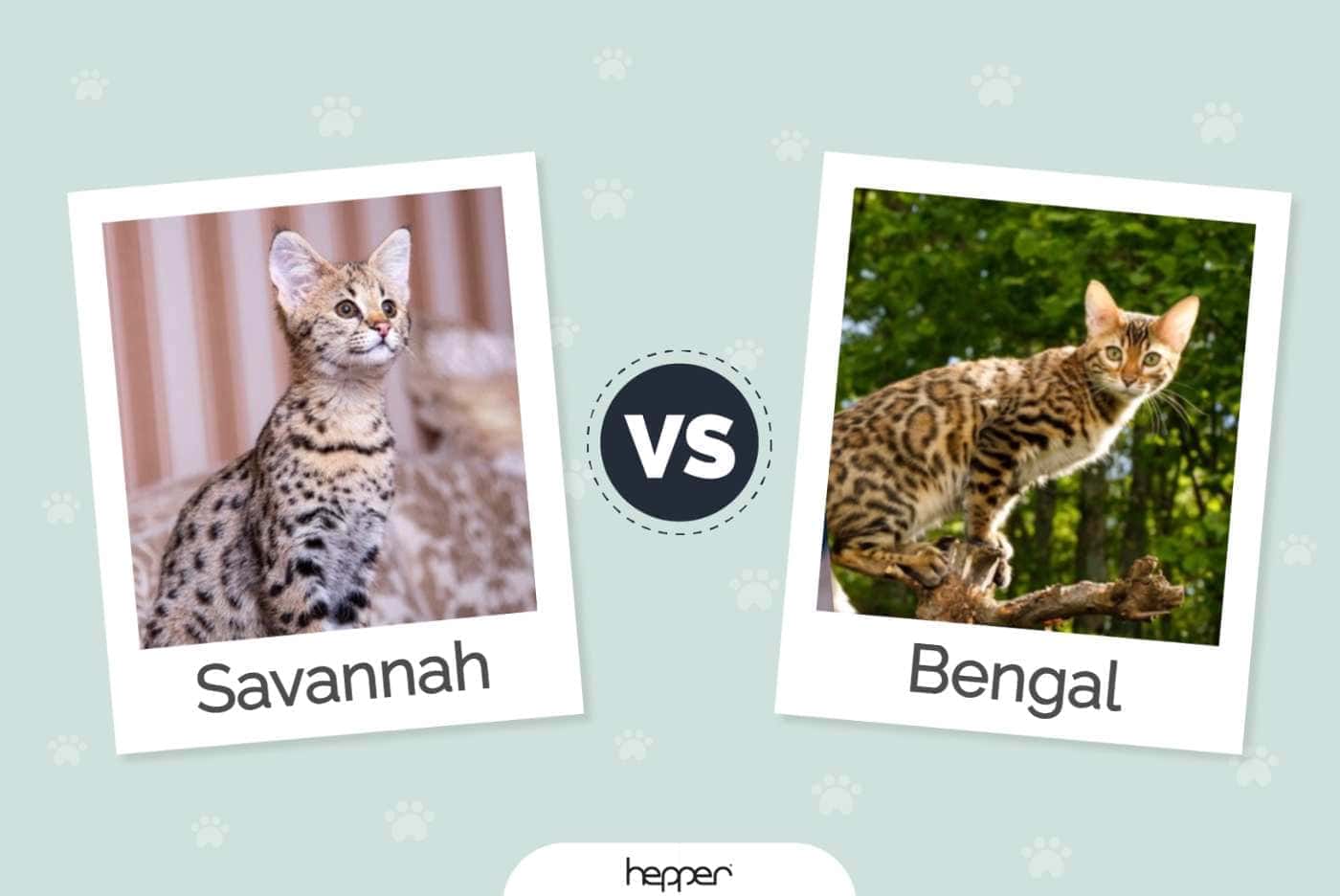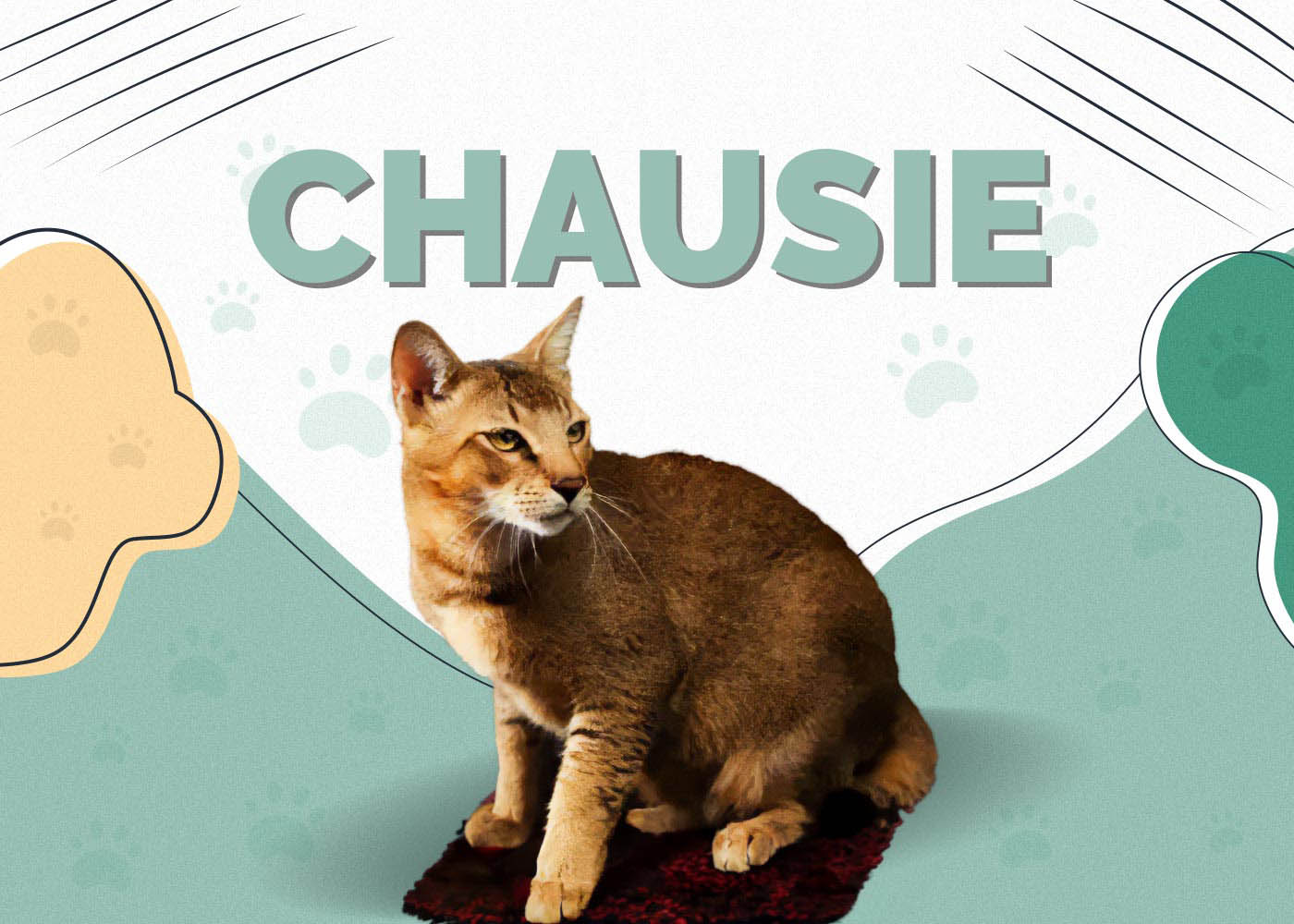15 Hybrid Cat Breeds (With Pictures)

Updated on
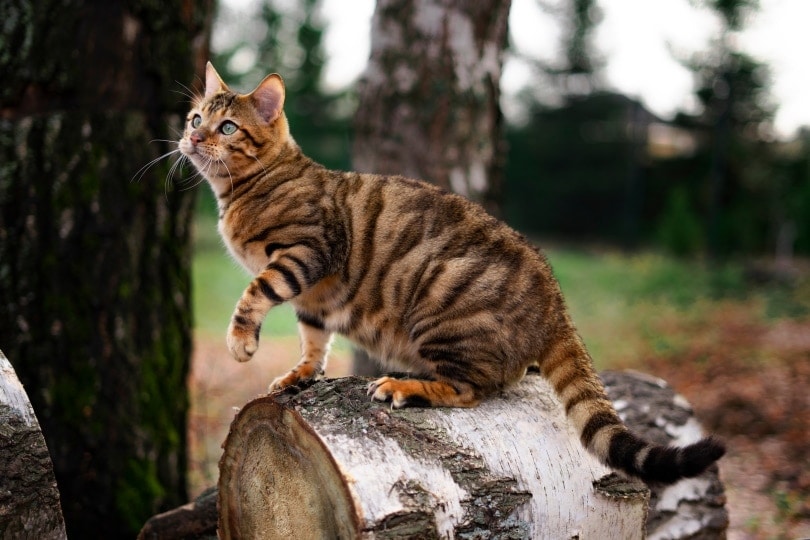
If you love cats and are an adventurous pet owner, you might consider adopting a hybrid breed cat. Hybrids are developed by crossing a wildcat with a domestic cat or mating two domestic cats. Most breeds have wild characteristics like their ancestors, but they still have lovable feline personalities.
Unlike purebreds, mixed breeds require active owners willing to tolerate some of the cats’ outlandish behavior and acrobatics. Hybrid cats are tame, but they retain more of the primal traits of their parents, and some species may be too much for the average cat lover.
We have several beautiful felines to discuss, and you might decide to choose one as the next member of your family.
The 15 Hybrid Cat Breeds
1. Bengal Cat
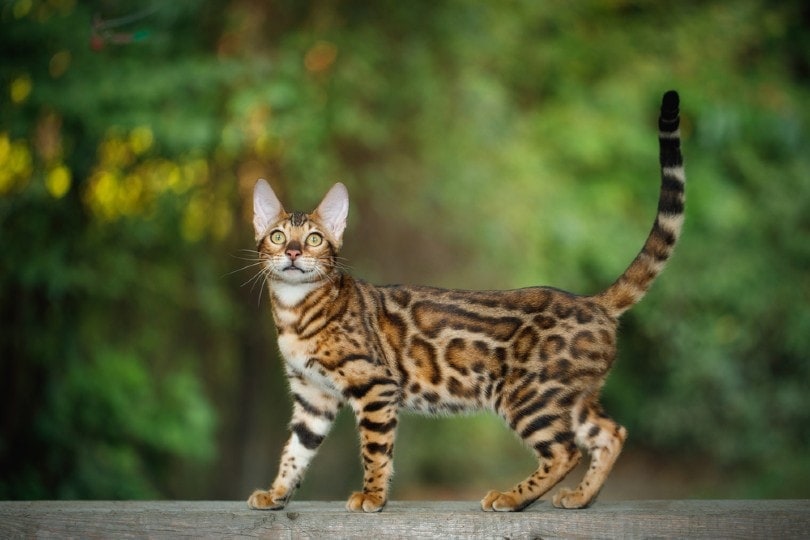
| Lifespan: | 12–16 years |
| Weight: | 8–15 pounds |
| Height: | 13–16 inches |
| Color: | Orange, sand, ivory, brown, rust, and golden |
The Bengal is undoubtedly the most requested hybrid around. In 1963, a breeder crossed an Asian Leopard cat with a Domestic Shorthair and created the Bengal. The cat’s striking spotted coat makes the animal appear as it escaped from the local zoo, but beneath the wild appearance lurks a friendly, mischievous friend for life. Bengals love large families who provide them with daily entertainment, and they’re one of the few breeds that enjoy playing in the water.
Because of the cat’s high prey drive, you cannot keep rodents, fish, or birds in the same home. Bengals have nimble paws that can turn off switches, open drawers, and grab at fish in the aquarium. The breed became known as the “Rolls Royce of Cats” when a Londoner paid $50,000 for a Bengal cat.
2. Burmilla
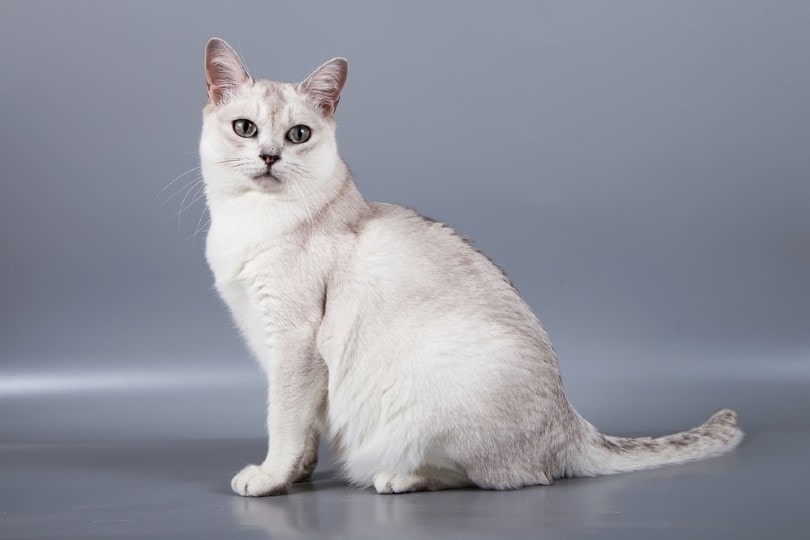
| Lifespan: | 10–15 years |
| Weight: | 6–13 pounds |
| Height: | 10–12 inches |
| Color: | Chocolate, blue, lilac, caramel, black |
If you’re lucky enough to locate a Burmilla breeder, you can adopt a green-eyed beauty nicknamed the Australian Tiffanie in Australia. The Burmilla is a rare breed developed in 1981 by crossing a Burmese with a Chinchilla Persian. UK breeders introduced the species to the United States in the mid-1990s, and although its popularity has grown, the number of breeders remains low.
Burmilla cats are affectionate to their human families but do not crave attention like other mixed breeds. They’re adaptable to multiple indoor environments, but they need a tower or obstacle course to practice their impressive climbing skills. They’re ideal for families with other pets and small children, and most cats do not suffer from separation anxiety when left alone.
3. Chausie Cat
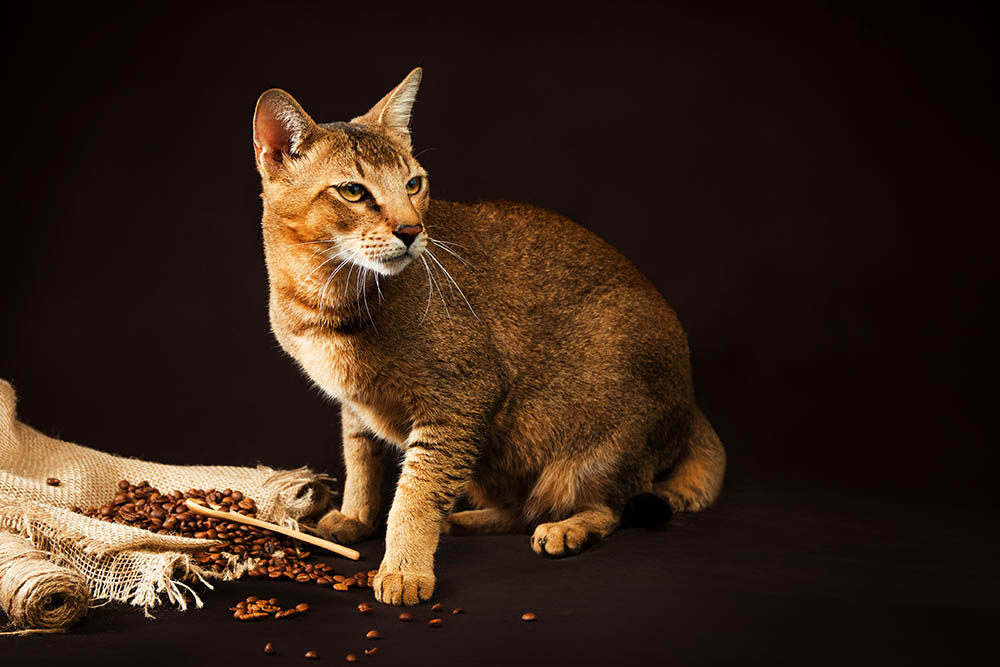
| Lifespan: | 12–16 years |
| Weight: | 12–25 pounds |
| Height: | 15–18 inches |
| Color: | Solid black, grizzled tabby, brown-ticked tabby |
One of the Chausie’s ancestors, the Jungle Cat, was domesticated by the ancient Egyptians. The puma-like feline was created when an Abyssinian was mated with the Asian Jungle Cat. Chausie cats are muscular, athletic animals that require plenty of time to play with their human families. They’re intelligent and much easier to train than other wild furballs; you can teach them tricks and train them to use a lease.
The cats only have three coat patterns, but the silvery tabby pattern, inherited from the Jungle Cat, is unique to the species. Although they’re great pets for active families, they can become destructive if left alone.
4. Cheetoh Cat
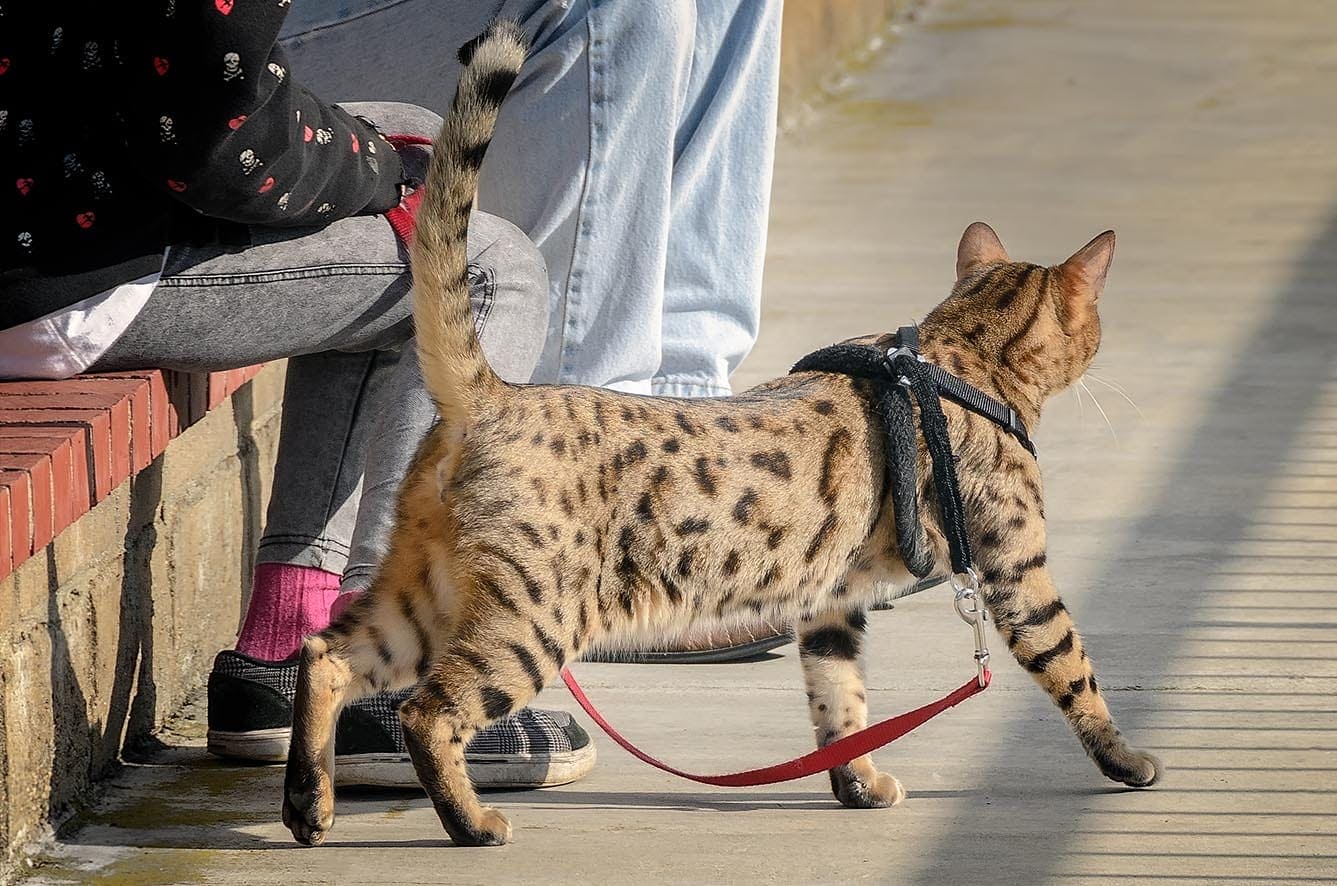
| Lifespan: | 12–15 years |
| Weight: | 15–25 pounds |
| Height: | 10–14 inches |
| Color: | Lynx point, sienna, cinnamon, black-spotted silver, black-spotted smoke |
With many of the same physical traits as its parents, the Ocicat and Bengal, the Cheetoh is a stunning feline. As its name implies, the cat resembles a wild Cheetah, but its amiable temperament contrasts its fierce appearance. Cheetohs behave well around children and other pets, and they love playing games with their families.
They require significant love and attention to keep them happy and a well-established climbing area to sow their wild roots. Although they’re not hypoallergenic, the cats have silky coats that may not irritate some allergy sufferers. Cheetohs are intelligent, and owners typically do not have any issues teaching them to fetch or use a leash.
5. Havana Brown
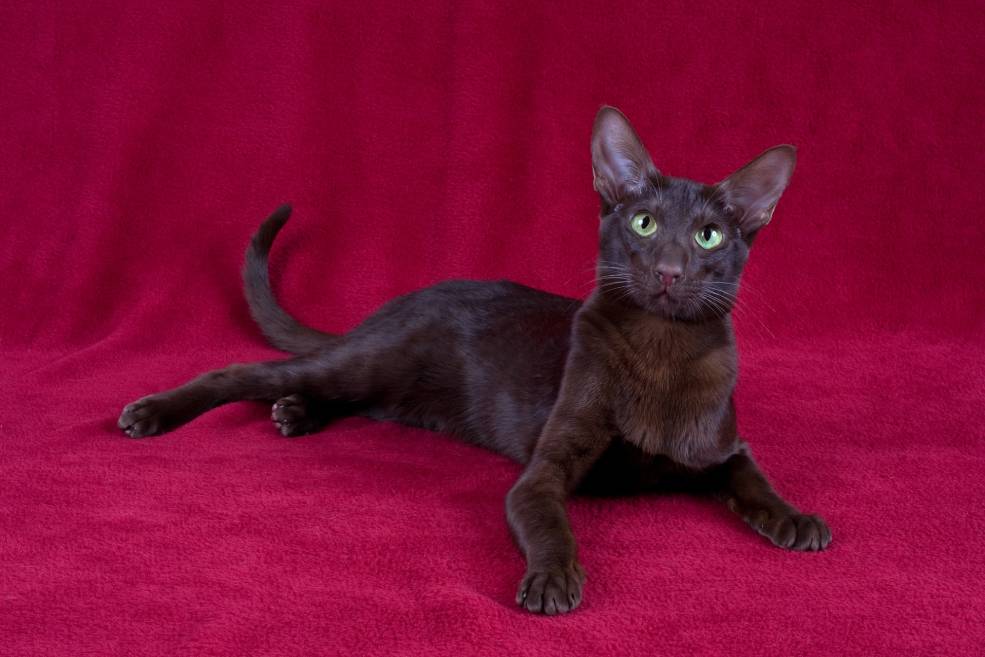
| Lifespan: | 15–20 years |
| Weight: | 6–12 pounds |
| Height: | 9–11 inches |
| Color: | Reddish-brown |
Also known as the “sweet mountain cat,” the Havana Brown has a gorgeous reddish-brown coat, brown whiskers, and a long narrow head. Several breeders, dating back to the 19th century, have tried to create a purely brown breed, but all attempts were unsuccessful until a seal point Siamese was bred with a domestic black cat.
The Havana Brown was named after the color of the famous cigar, and although the cat looks wild, it’s friendly to humans and other animals. The cat enjoys living with large families with several pets, and it’s not fond of spending time alone. Unlike its Siamese ancestors, Havana Browns communicate with little chirps and trills.
6. Highlander
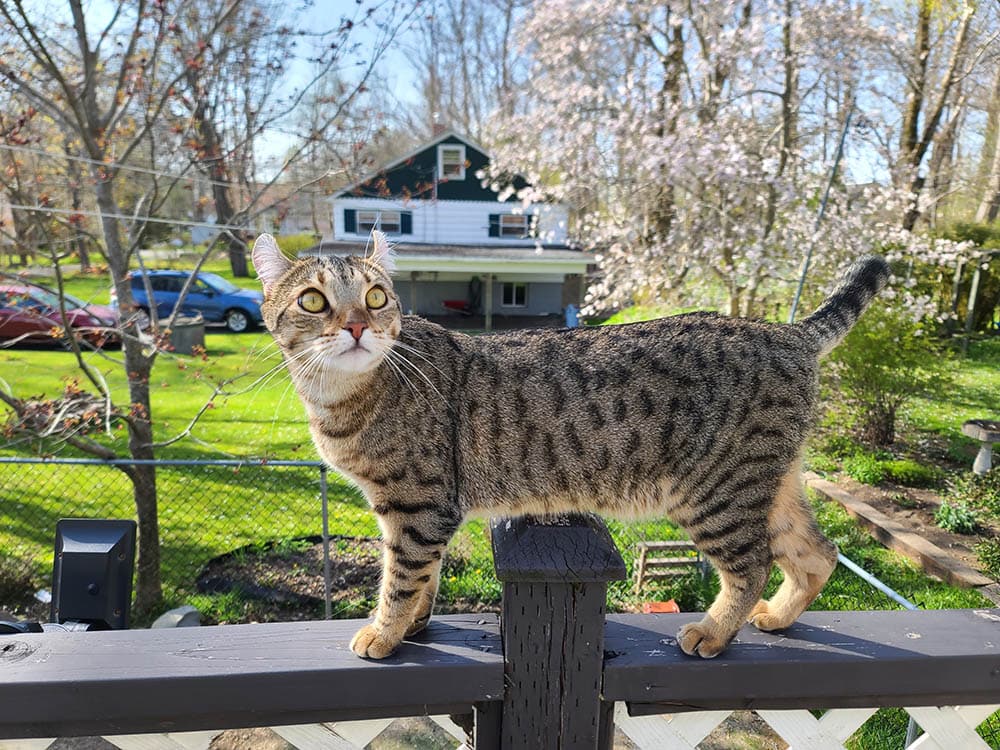
| Lifespan: | 10–15 years |
| Weight: | 10–20 pounds |
| Height: | 10–16 inches |
| Color: | Lynx points, solid points |
The Highlander was created in 1993 when breeders crossed a Jungle Curl with a Desert Lynx. The cats have bobbed or short tails, low-shedding short coats with spots, and ears that curl back. Highlanders enjoy playing with their families, and they get along with children of all ages. Because of their high activity level, these active cats need daily exercise, climbing trees, and plenty of toys.
They’re intelligent cats that require mental stimulation like interactive games, and they do not react well to being left alone in the house.
7. Jungle Curl
| Lifespan: | 12–15 years |
| Weight: | 8–25 pounds |
| Height: | 14–25 inches |
| Color: | Black, brown, gray, bicolor |
The Jungle Curl is an experimental breed created by mating a Jungle cat with an American Curl or similar domestic cat. Sometimes, other species like the Hemingway Curl, Chausie, or Highland Lynx are added to the mix. Jungle Curls are large, powerful cats that require daily exercise and plenty of climbing areas in the house.
They enjoy playing dog-like games with their owners but require early socialization and training around children due to their size and wild roots. Because breeders must raise several generations to dilute the wild traits, Jungle Curls are challenging to breed and expensive to adopt.
8. Ocicat
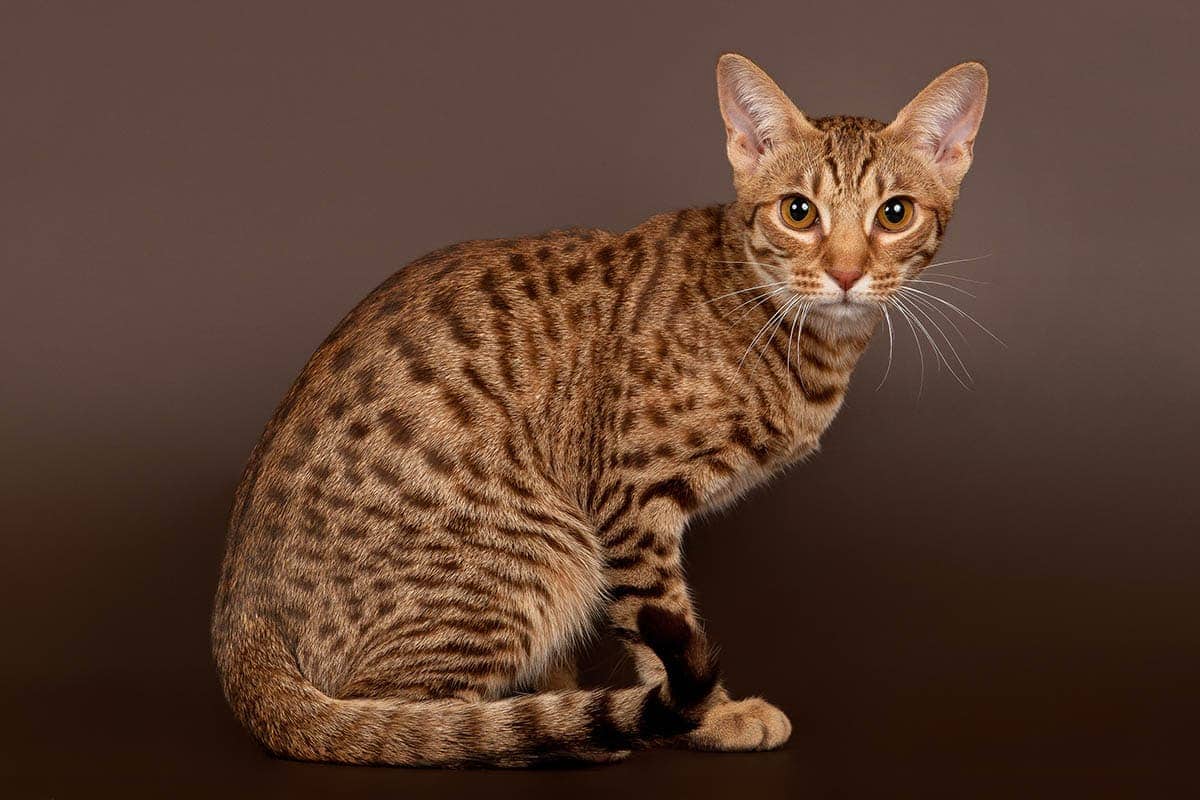
| Lifespan: | 15–18 years |
| Weight: | 12–15 pounds |
| Height: | 16–18 inches |
| Color: | Chocolate, tawny, silver, brown, lavender, and fawn-silver |
Ocicat cats are wild-looking felines, and they were developed using a mixture of domestic breeds. The first spotted Ocicat resulted from pairing an Abyssinian and Siamese, but the American Shorthair was later used as a breeding partner. Ocicats are one of the few breeds that you can “free feed” without worrying about the cat becoming obese. They’re active cats that need more exercise than other breeds, and they aren’t the best roommates for small animals.
Ocicats have a high prey drive and polished hunting skills, but they’re devoted to their human families. Although they’re affectionate, they can become destructive if left alone without friends.
9. Oriental Shorthair
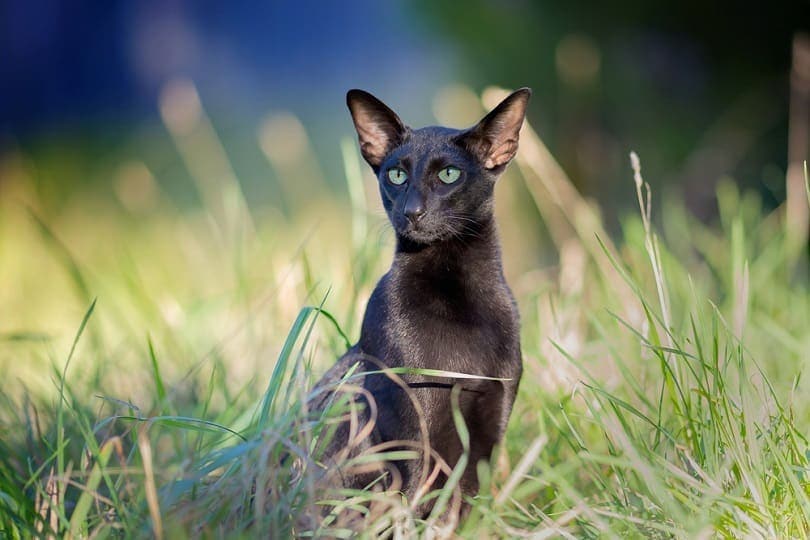
| Lifespan: | 10–15 years |
| Weight: | 8–12 pounds |
| Height: | 9–11 inches |
| Color: | Chocolate, white, frost, lavender, brown, red, blue, lavender, fawn, cream |
Although several hybrid cats are fond of people, the Oriental Shorthair cannot seem to live happily without them. The Oriental Shorthair had its roots in the 19th century when Siamese breeders used British Shorthair, Russian Blue, Polycats, and Abyssinians to increase the Siamese breeding pool. Orientals have long, thin legs, wedge-shaped heads, a semi-long coat, and large bat-like ears.
They’re one of the most intelligent hybrids, and they need frequent mental and physical stimulation. They constantly meow and let you know if you leave them alone for too long.
10. Pixie Bob
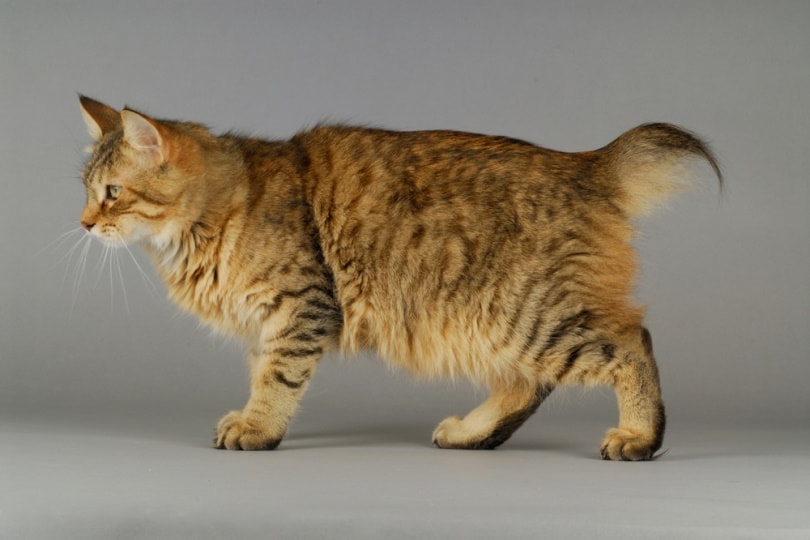
| Lifespan: | 13–15 years |
| Weight: | 8–25 pounds |
| Height: | 20–24 inches |
| Color: | Tawny or reddish tabby |
The Pixie Bob was not initially created with human interference, but the rugged cat resulted from a Domestic shorthair mating with a male Bobcat. The owner who found the bob-tailed kitten named it Pixie and decided to develop a breed. Pixie Bob can have long or short hair double coats, and their facial hair grows downward, giving them a “mutton chop” look. Another unique physical appearance is their additional toes.
Cat organizations only allow seven total toes per paw for competitions, but the Pixie Bob is one of the few polydactyl cats permitted to compete in shows. These cats are exceptional family pets that love children and other domestic animals. They’re active but do not mind lying on the couch with the family.
11. Ragdoll
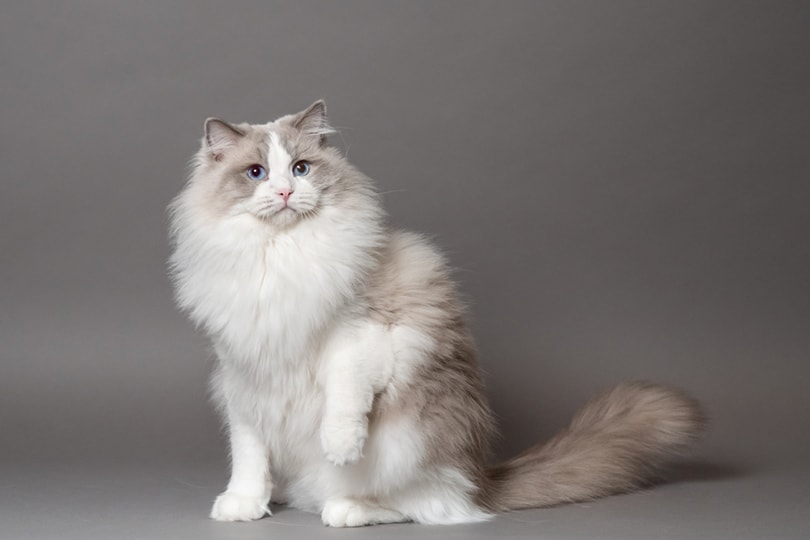
| Lifespan: | 15–20 years |
| Weight: | 10–20 pounds |
| Height: | 9–11 inches |
| Color: | Black, lilac, blue, red, ebony, lavender, tan, sable, orange, tan |
The Ragdoll cat originated in the 1960s when a California breeder began pairing various feral cats around her neighborhood with a domestic longhaired white female. The offspring’s incredibly gentle nature continues today and has made the Ragdoll one of the most sought-after breeds. The cats have semi-long bushy coats without an insulating undercoat, but the undercoat’s absence reduces shedding.
Ragdolls will collapse in your lap or arms and greet you when you come home from work. They do not require as much exercise as other hybrid cats, but they love playing fetch. Ragdolls like staying close to the ground, and you probably will not need a cat tree to keep them happy.
12. Savannah Cat
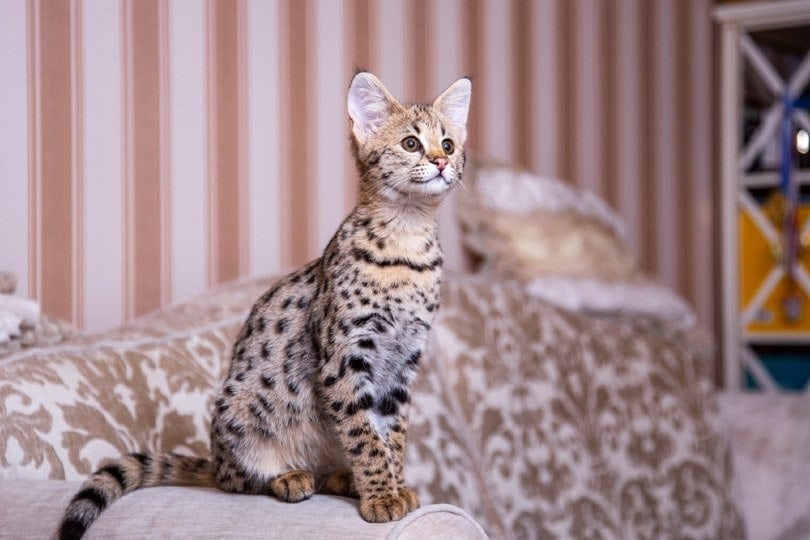
| Lifespan: | 12–20 years |
| Weight: | 10–25 pounds |
| Height: | Up to 16 inches |
| Color: | Brown, black, black-spotted tabby, brown spotted-cream |
In 1986, the first Savannah was born after a male African Serval mated with a domestic housecat. Savannahs are lanky, muscular animals that appear larger because of their long torsos and legs. Their spotted coat resembles a Cheetah, and some people may mistake the cat for a wild beast. However, the Savannah is a curious and affectionate cat that loves interactive puzzles, walking on a leash, and leaping around a cat tree.
They enjoy large families and behave well around children, but their high prey drive rules out keeping rodents, fish, or birds in the same home. At 19 inches tall, Arcturus Aldebaran Powers the Savannah cat still holds the world record as the world’s tallest cat. Although they’re considered domestic cats, Savannahs are outlawed in states with restrictions on animals with wild cat heritage.
13. Serengeti
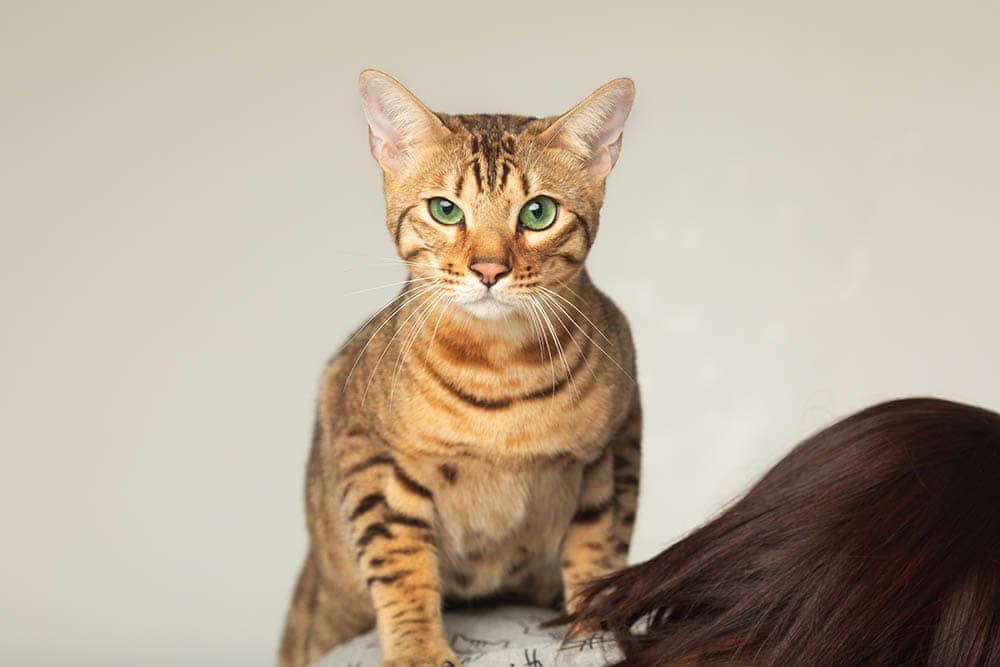
| Lifespan: | 10–15 years |
| Weight: | 8–15 pounds |
| Height: | 8–10 inches |
| Color: | Solid black, cold gray with black spots, white silver with black spots |
Like the Savannah, the Serengeti was developed to create a Serval-like feline with a gentle temperament. However, the Serengeti does not contain African Serval genes but comes from Bengals and Oriental Shorthairs. Although they have exotic spotted coats, Serengeti cats are lovable and bond closely with humans.
They love running at high speed around the home and leaping to great heights, and their mouths rarely stop moving like their Oriental ancestors. Serengeti cats dislike leaving their owner’s side, and they do not behave well when left alone for long periods.
14. Tonkinese
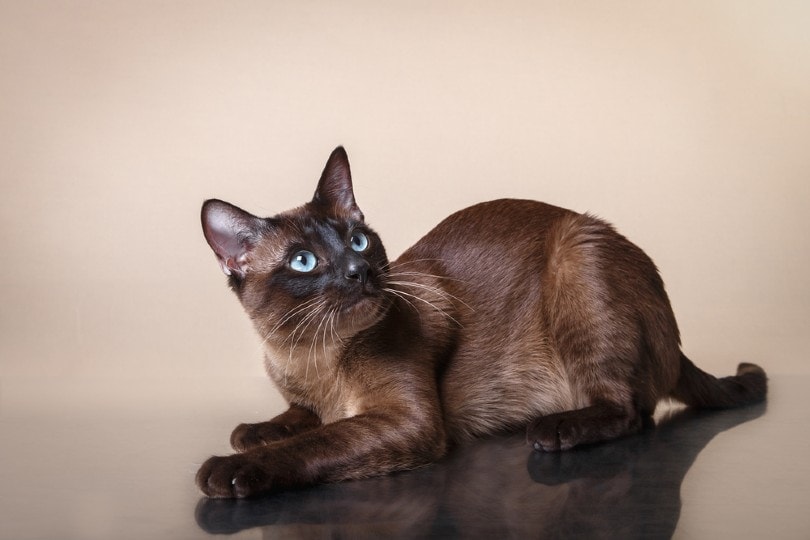
| Lifespan: | 15–20 years |
| Weight: | 6–12 pounds |
| Height: | 7–10 inches |
| Color: | Chocolate, cream, tan, blue, gray, beige, sable, brown |
The Tonkinese is a mix between a Burmese and a Siamese cat. The animal may have been created accidentally in the early 20th century when roaming Burmese and Siamese cats in Thailand mated. Some consider the cat as the ideal mixture of the two breeds. They’re affectionate to people and love jumping into their laps or open arms when they’re standing. The Tonkinese thrive with interactive games and several hours together with their families.
They’re one of the friendliest cats to have around children, but they do not fare well on their own. Frequent travelers are not the ideal parents for the Tonkinese.
15. Toyger
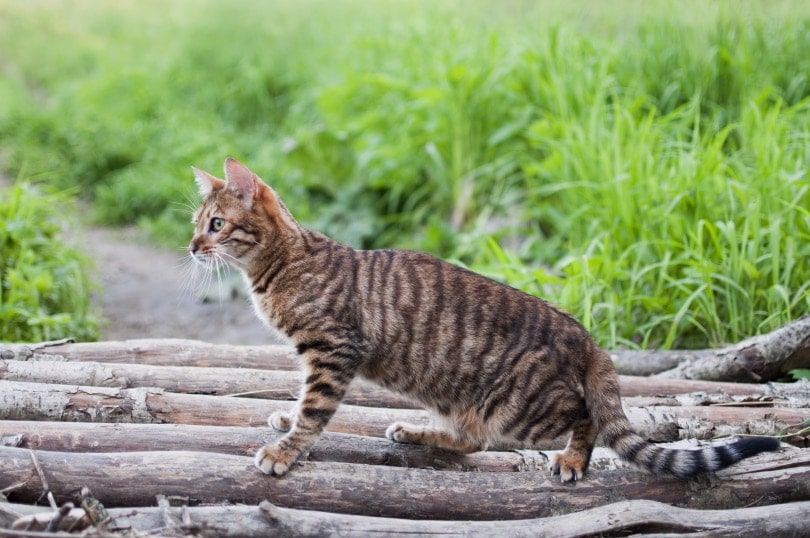
| Lifespan: | 10–15 years |
| Weight: | 7–15 pounds |
| Height: | Up to 18 inches |
| Color: | Vertical braided or mackerel stretched rosettes on an orange background. |
The breeders of the original Toyger mated a domestic shorthair tabby with a Bengal cat to create a unique species displaying the “M” pattern on their foreheads similar to tigers. Toygers are intelligent pets who learn tricks quickly and respond well to leash training. They enjoy living with large families and respond well to other pets and children.
However, they need adult supervision around infants because of their speed and playfulness. Although Toygers look like they should be hunting in a tropical jungle, they only want to be around their families.
Conclusion
Hybrid breeds require patient owners willing to spend hours on training and physical activities. Cats crossed with exotic felines typically have strong prey drives and incredible agility, and some breeds are not allowed in every state.
Although they have wild characteristics, each mixed breed is devoted to their human families and makes excellent pets for adventurous owners.
Featured Image Credit: Kutikova Ekaterina, Shutterstock


